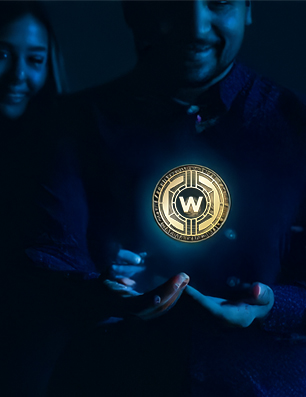- Written by: Brady Tinnin
- Wed, 16 Mar 2022
- Russian Federation
As retail interest in the metaverse fades, multinational banks like HSBC are quietly stepping in to join the booming virtual economy. Covered: HSBC Buys Metaverse Land In Sandbox Is Digital Real Estate Really The Next Big Thing? Retail interest surrounding the metaverse has slowed down in recent months, but that doesn’t mean the trend is […] The post Multinational HSBC Bank Buys Digital Land In This Ethereum-Based Metaverse appeared first on CryptosRus.
Multinational HSBC Bank Buys Digital Land In This Ethereum-Based Metaverse
As retail interest in the metaverse fades, multinational banks like HSBC are quietly stepping in to join the booming virtual economy.
Covered:
- HSBC Buys Metaverse Land In Sandbox
- Is Digital Real Estate Really The Next Big Thing?
Retail interest surrounding the metaverse has slowed down in recent months, but that doesn’t mean the trend is going anywhere. Big banks and institutions are spending their time and money to claim a stake in our virtual future, but are they missing the bigger picture here? Are we envisioning the metaverse properly, or is it just another bubble waiting to pop?
HSBC Buys Metaverse Land In Sandbox
Delighted to announce we’ve partnered with @HSBC, one of the world’s largest international banking & financial services providers! ??
Bringing a host of opportunities to engage with global financial services & sports communities in The Sandbox Metaverse.https://t.co/GmQ3lrVmnB
— The Sandbox (@TheSandboxGame) March 16, 2022
In a statement from this morning, the Hongkong and Shanghai Banking Corporation (HSBC), one of the largest international banks in the world with $3 trillion in assets under management (AUM), announced that it would be making its own entrance into the metaverse. The bank will buy a plot of digital land in the Ethereum-based Sandbox metaverse and develop it to engage with sports, e-sports and gaming fans.
Sebastien Borget, the COO and co-founder of The Sandbox, says that HSBC’s foray into the Sandbox marks the beginning of broader institutional adoption of the metaverse.
“We’re pleased to see large, trusted institutions such as HSBC join The Sandbox open metaverse and embrace the culture of Web3, connecting with users through entertainment, gaming and user-generated content. We believe this is the beginning of a broader adoption of Web3 and the metaverse by institutions driving brand experiences and engagement within this new ecosystem.”
Token holders of the Ethereum-based project is enjoying the news, as The Sandbox (SAND) jumped 10% off the announcement. At the time of writing, SAND is trading at $2.91.
RECOMMENDED: 4.2 TRILLION DOLLAR ASSET MANAGER IS DIVING HEAD FIRST INTO CRYPTO AND THE METAVERSE
Is Digital Real Estate Really The Next Big Thing?
Now, there is a lot of debate surrounding digital real estate, the metaverse, and the virtual economy in general, as people speculate over what its future in the mainstream world will look like. If you’ll recall, Jamie Dimon’s JP Morgan took a similar bet on the metaverse back in February when the bank revealed its very own metaverse lounge within the Decentraland metaverse.
We’re seeing people, banks, and even countries enter the digital real estate market, but there’s one glaring problem surrounding this trend — physical real estate garners its value through scarcity and demand effects, whereas digital real estate is anything but scarce. In a borderless virtual reality, there should be no problem dishing out enough “land” for everyone; scarcity isn’t really a concept in a virtual space. Buying a plot of virtual land is more or less like buying a website on the internet.
When people or banks spend millions of dollars on a plot of metaverse land, I can’t help but wonder if there’s something I’m missing, or if these purchases are essentially just representing absurdly expensive website domain names. Perhaps they wanted to have a plot in a popular location on the map, but in a virtual world, even the idea of a “location” gets tossed out when you can place yourself in whatever virtual setting you desire. In the same way that we can bounce from one website (or “location”) to another online, the metaverse allows you to bounce from place to place with no travel time in between.
The internet is an early version of the metaverse.
– Linkedin co-founder
— Blockworks (@Blockworks_) December 27, 2021
If anything, I think these first iterations of the metaverse we’re seeing in The Sandbox or Decentraland speak to how incredibly early the space is. In the same way that the pre-2000s internet was limited to just a couple of different web pages, our first-generation metaverses are limited to just a couple of different maps. Just like the internet today, however, I imagine there will be literally countless “locations” in the metaverse in the same way that there are countless websites on the internet today.
So while people may be shelling out millions for these digital plots, as an average investor, I would wait for the marketplace to determine the proper use case for digital real estate — buying Ethereum might just be the safest way to get exposure to this market.
The nature of reality dictates our incentives to monetize things; we are constrained by certain physical limits, like location, size, weight, etc. All these factors play into a product’s valuation. The metaverse, however, does not have these physical constraints, so I have a hard time believing we’ll derive its value from that criteria as well.
The following companies are entering the #Metaverse
• Facebook (Meta)
• Unity Software
• Qualcomm Inc.
• Decentraland
• Epic Games
• JP Morgan
• Snapchat
• Microsoft
• Samsung
• Amazon
• Shopify
• Adidas
• Roblox
• Nvidia
• Apple
• Sony
• Nike— Watcher.Guru (@WatcherGuru) March 3, 2022
The post Multinational HSBC Bank Buys Digital Land In This Ethereum-Based Metaverse appeared first on CryptosRus.






